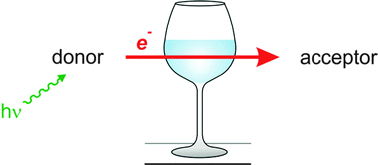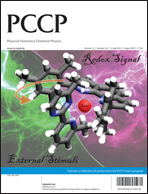Photoinduced electron tunneling between randomly dispersed donors and acceptors in frozen glasses and other rigid matrices
Abstract
In fluid solution un-tethered donors and acceptors can diffuse freely, and consequently the donor–acceptor distance is usually not fixed on the timescale of an electron transfer event. When attempting to investigate the influence of driving-force changes or donor–acceptor distance variations on


 Please wait while we load your content...
Please wait while we load your content...